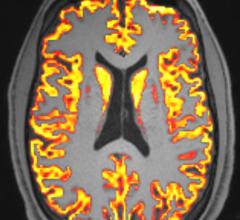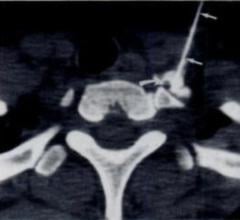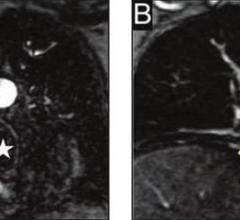
December 23, 2020 — The U.S. Food and Drug Administration December 18 issued an emergency use authorization (EUA) for a second vaccine for the prevention of coronavirus disease 2019 (COVID-19). The emergency use authorization allows the Moderna COVID-19 Vaccine to be distributed in the U.S. for use in individuals 18 years of age and older.
“With the availability of two vaccines now for the prevention of COVID-19, the FDA has taken another crucial step in the fight against this global pandemic that is causing vast numbers of hospitalizations and deaths in the United States each day,” said FDA Commissioner Stephen M. Hahn, M.D.
The FDA has determined that the Moderna COVID-19 Vaccine has met the statutory criteria for issuance of an EUA. The totality of the available data provides clear evidence that the Moderna COVID-19 Vaccine may be effective in preventing COVID-19. The data also show that the known and potential benefits outweigh the known and potential risks—supporting the company’s request for the vaccine’s use in people 18 years of age and older. In making this determination, the FDA can assure the public and medical community that it has conducted a thorough evaluation of the available safety, effectiveness, and manufacturing quality information.
Here is a link to the FDA's fact sheet on the Moderna COVID vaccine.
Hahn said the review of the vaccine was not a rushed, political move, but a thorough scientific review process.
“Through the FDA’s open and transparent scientific review process, two COVID-19 vaccines have been authorized in an expedited timeframe while adhering to the rigorous standards for safety, effectiveness, and manufacturing quality needed to support emergency use authorization that the American people have come to expect from the FDA," Hahn explained. "These standards and our review process, which are the same we have used in reviewing the first COVID-19 vaccine and intend to use for any other COVID-19 vaccines, included input from independent scientific and public health experts as well as a thorough analysis of the data by the agency’s career staff.”
The Moderna COVID-19 Vaccine contains messenger RNA (mRNA), which is genetic material. The vaccine contains a small piece of the SARS-CoV-2 virus’s mRNA that instructs cells in the body to make the virus’s distinctive “spike” protein. After a person receives this vaccine, their body produces copies of the spike protein, which does not cause disease, but triggers the immune system to learn to react defensively, producing an immune response against SARS-CoV-2.
“Guided by science and data, the agency’s career staff determined that the vaccine’s known and potential benefits clearly outweigh its known and potential risks, and although not an FDA approval, the FDA’s expectations described in our June and October guidance documents have been met,” said Peter Marks, M.D., Ph.D., Director of the FDA’s Center for Biologics Evaluation and Research. “Today’s authorization demonstrates our steadfast commitment to the health of the American people, with the assurance that our scientific standards and the integrity of our review process have been maintained. This achievement is yet another testament to the dedication of FDA’s career scientists and physicians, who have been working urgently to conduct comprehensive and rigorous evaluations of the data submitted for vaccines to prevent COVID-19.”
FDA Evaluation of Available Safety Data for the Moderna COVID Vaccine
Moderna COVID-19 Vaccine is administered as a series of two doses, one month apart. The available safety data to support the EUA include an analysis of 30,351 participants enrolled in an ongoing randomized, placebo-controlled study conducted in the U.S. These participants, 15,185 of whom received the vaccine and 15,166 of whom received saline placebo, were followed for a median of more than two months after receiving the second dose. The most commonly reported side effects, which typically lasted several days, were pain at the injection site, tiredness, headache, muscle pain, chills, joint pain, swollen lymph nodes in the same arm as the injection, nausea and vomiting, and fever. Of note, more people experienced these side effects after the second dose than after the first dose, so it is important for vaccination providers and recipients to expect that there may be some side effects after either dose, but even more so after the second dose.
It is mandatory for ModernaTX, Inc. and vaccination providers to report the following to the Vaccine Adverse Event Reporting System (VAERS) for Moderna COVID-19 Vaccine: all vaccine administration errors, serious adverse events, cases of Multisystem Inflammatory Syndrome (MIS), and cases of COVID-19 that result in hospitalization or death.
The first COVID vaccine was granted an FDA EUA December 12. Read the article FDA Clears First COVID-19 Vaccine Under an Emergency Use Authorization
FDA Evaluation of Available Effectiveness Data for the Moderna Vaccine
The effectiveness data to support the EUA include an analysis of 28,207 participants in the ongoing randomized, placebo-controlled U.S. study who did not have evidence of SARS-CoV-2 infection prior to the first dose of vaccine. Among these participants, 14,134 received the vaccine and 14,073 received placebo. The vaccine was 94.1% effective in preventing COVID-19 disease among these clinical trial participants with 11 cases of COVID-19 in the vaccine group and 185 in the placebo group. At the time of the analysis of these 196 COVID-19 cases, none in the vaccine group and 30 in the placebo group were classified as severe. After the analysis of these 196 cases was completed, one severe case in the vaccine group was identified and is awaiting confirmation. At this time, data are not available to determine how long the vaccine will provide protection, nor is there evidence that the vaccine prevents transmission of SARS-CoV-2 from person to person.
What is the FDA Emergency Use Authorization Process for the COVID Vaccine?
On the basis of the determination by the Secretary of the Department of Health and Human Services on Feb. 4, 2020, that there is a public health emergency that has a significant potential to affect national security or the health and security of United States citizens living abroad, and issued declarations that circumstances exist justifying the authorization of emergency use of unapproved products, the FDA may issue an EUA to allow unapproved medical products or unapproved uses of approved medical products to be used in an emergency to diagnose, treat, or prevent COVID-19 when there are no adequate, approved, and available alternatives.
The issuance of an EUA is different than an FDA approval (licensure) of a vaccine, in that a vaccine available under an EUA is not approved. In determining whether to issue an EUA for a product, the FDA evaluates the available evidence to determine whether the product may be effective and also assesses any known or potential risks and any known or potential benefits. If the product meets the effectiveness standard and the benefit-risk assessment is favorable, the product is made available during the emergency. Once a manufacturer submits an EUA request for a COVID-19 vaccine to the FDA, the agency then evaluates the request and determines whether the relevant statutory criteria are met, taking into account the totality of the scientific evidence about the vaccine that is available to the FDA.
The EUA also requires that fact sheets that provide important information, including dosing instructions, and information about the benefits and risks of the Moderna COVID-19 Vaccine, be made available to vaccination providers and vaccine recipients.
ModernaTX, Inc. has submitted a pharmacovigilance plan to the FDA to monitor the safety of Moderna COVID-19 Vaccine. The pharmacovigilance plan includes a plan to complete longer-term safety follow-up for participants enrolled in ongoing clinical trials. The pharmacovigilance plan also includes other activities aimed at monitoring the safety profile of the Moderna COVID-19 vaccine and ensuring that any safety concerns are identified and evaluated in a timely manner.
The FDA also expects manufacturers whose COVID-19 vaccines are authorized under an EUA to continue their clinical trials to obtain additional safety and effectiveness information and pursue approval (licensure).
The EUA for the Moderna COVID-19 Vaccine was issued to ModernaTX, Inc. The authorization will be effective until the declaration that circumstances exist justifying the authorization of the emergency use of drugs and biologics for prevention and treatment of COVID-19 is terminated. The EUA for Moderna COVID-19 Vaccine may be revised or revoked if it is determined the EUA no longer meets the statutory criteria for issuance.
The FDA, an agency within the U.S. Department of Health and Human Services, protects the public health by assuring the safety, effectiveness, and security of human and veterinary drugs, vaccines and other biological products for human use, and medical devices. The agency also is responsible for the safety and security of our nation’s food supply, cosmetics, dietary supplements, products that give off electronic radiation, and for regulating tobacco products.
What is a Messenger RNA Vaccine?
The Pfizer and Moderna vaccines are the first vaccines being commercialized that use messenger RNA (mRNA). This has been discussed for years as a novel way to speed development of new vaccines and greatly simplify vaccine production. Messenger RNA vaccines take advantage of the process that cells use to make proteins, or a piece of a protein, in order to trigger an immune response and build immunity to a virus.
In contrast, most vaccines today use weakened or inactivated versions or components of a disease-causing virus to stimulate the body’s immune response to create antibodies.
Since mRNA vaccines do not use the live virus that causes COVID-19, the vaccine cannot give recipients the virus.
COVID-19 mRNA vaccines give instructions for our cells to make a harmless piece of what is called the “spike protein.” The spike protein is found on the surface of the virus that causes COVID-19.
COVID-19 mRNA vaccines are given in the upper arm muscle. Once the instructions (mRNA) are inside the muscle cells, the cells use them to make the protein peice. After the protein piece is made, the cell breaks down the instructions and gets rid of them.
Next, the cell displays the protein piece on its surface. Our immune systems recognize that the protein doesn’t belong there and begin building an immune response and making antibodies, like what happens in natural infection against COVID-19.
At the end of the process, the body learned how to protect against future infection. The benefit of mRNA vaccines is those vaccinated gain this protection without ever having to risk the serious consequences of getting sick with COVID-19.
Prior to the FDA EUA Saturday, the CDC said there are currently no licensed mRNA vaccines in the United States. However, researchers have been studying and working with them for decades. Interest has grown in these vaccines because they can be developed in a laboratory using readily available materials. This means the process can be standardized and scaled up, making vaccine development faster than traditional methods of making vaccines.
mRNA vaccines have been studied before for flu, Zika, rabies, and cytomegalovirus (CMV). As soon as the necessary information about the virus that causes COVID-19 was available, scientists began designing the mRNA instructions for cells to build the unique spike protein into an mRNA vaccine.
The CDC said future mRNA vaccine technology may allow for one vaccine to provide protection for multiple diseases, thus decreasing the number of shots needed for protection against common vaccine-preventable diseases.
Vaccine Development 101 Explained by the FDA
Experimental Monoclonal Antibody Is Not Effecive and Trial Ended
The National Intitues of Health (NIH) also announced this week that the preliminary results of a Phase 3, randomized, placebo-controlled clinical trial testing the investigative monoclonal antibody LY-CoV555 in hospitalized COVID-19 patients were published December 22 in The New England Journal of Medicine. (J Lundgren et al. A neutralizing monoclonal antibody for hospitalized patients with COVID-19. The New England Journal of Medicine. DOI: 10.1056/NEJMoa2033130 (2020) The antibody did not provide clinical benefit compared to placebo. The trial, which had been halted to new enrollment in late October following a recommendation by the independent Data and Safety Monitoring Board (DSMB), is part of the Accelerating COVID-19 Therapeutic Interventions and Vaccines (ACTIV) program. The trial is sponsored by the National Institute of Allergy and Infectious Diseases (NIAID), part of the National Institutes of Health.
Related COVID Radiology Content:
FDA Clears First COVID-19 Vaccine Under an Emergency Use Authorization
Lung Ultrasounds Could Help Determine COVID-19 Outcome
Johns Hopkins Medicine Expert Weighs Devastating Impact of COVID-19 on Healthcare Workers
CT in a Box Helps Rapidly Boost Imaging Capability at COVID Surge Hospitals
CT Imaging of the 2019 Novel Coronavirus (2019-nCoV) Pneumonia
Infervision in the Frontlines Against the Coronavirus
CT Imaging Features of 2019 Novel Coronavirus (2019-nCoV)
The Cardiac Implications of Coronavirus
VIDEO: COVID-19 Pneumonia Chest CT Scan Scroll Through
CT Imaging of the 2019 Novel Coronavirus (2019-nCoV) Pneumonia
Chest CT Can Distinguish Negative From Positive Lab Results for COVID-19
VIDEO: CT Sees Increased Use During COVID-19
Radiologists Urge Use of Medical Imaging and AI-Powered Solutions to Manage COVID-19
Stroke Scans Could Reveal COVID-19 Infection
Handheld Ultrasound Used to Monitor COVID-19 Patients With Cardiac Complications
Study Looks at CT Findings of COVID-19 Through Recovery
Using Lung X-rays to Diagnose COVID-19
How COVID-19 Affects the Brain in Neuroimaging
VIDEO: Lingering Myocardial Involvement After COVID-19 Infection — Interview with Aaron Baggish, M.D.
COVID-19 Can Impact Hearts in Young Children
VIDEO: What Are The Long-term Cardiac Impacts of COVID-19 Infection — Interview with Todd Hurst, M.D.
Find more related clinical content Coronavirus (COVID-19)


 July 25, 2025
July 25, 2025 








